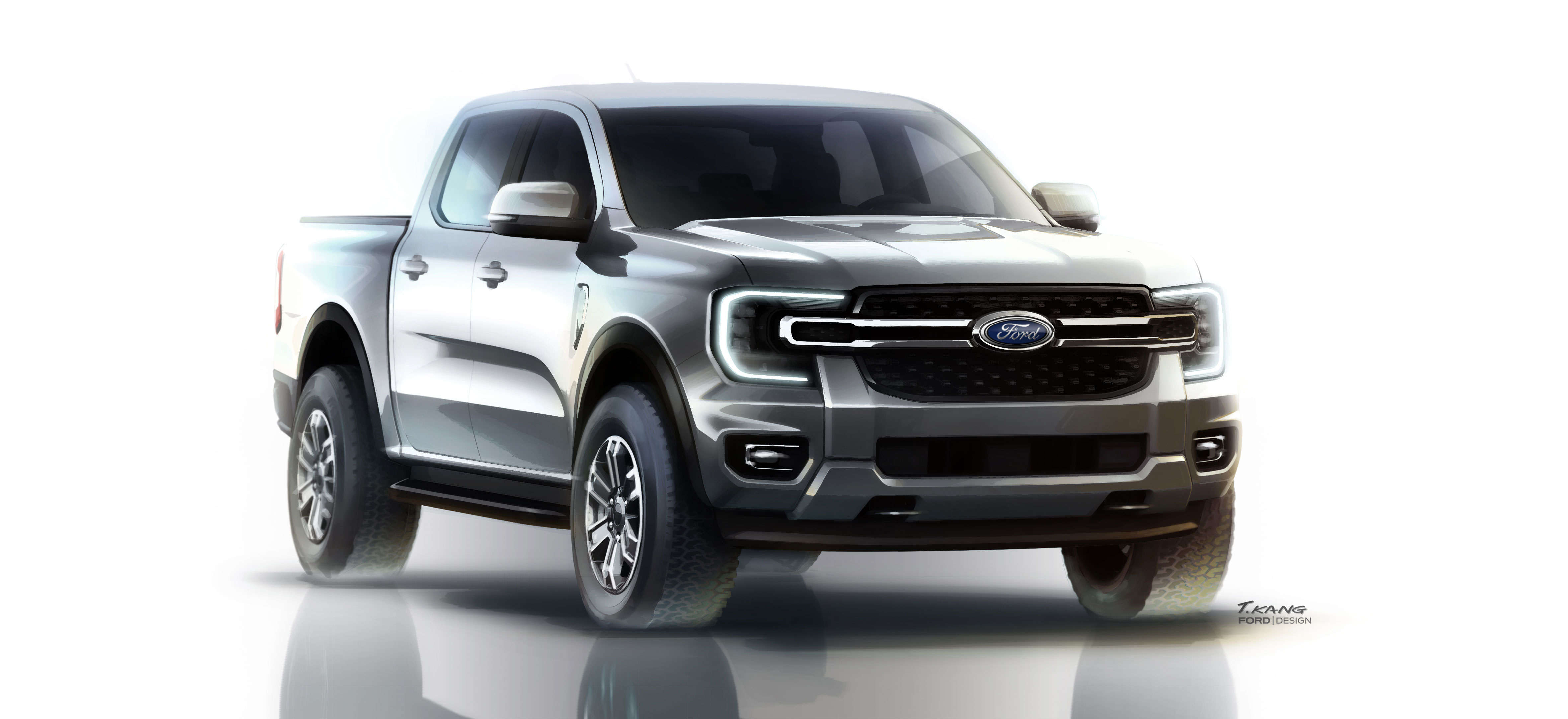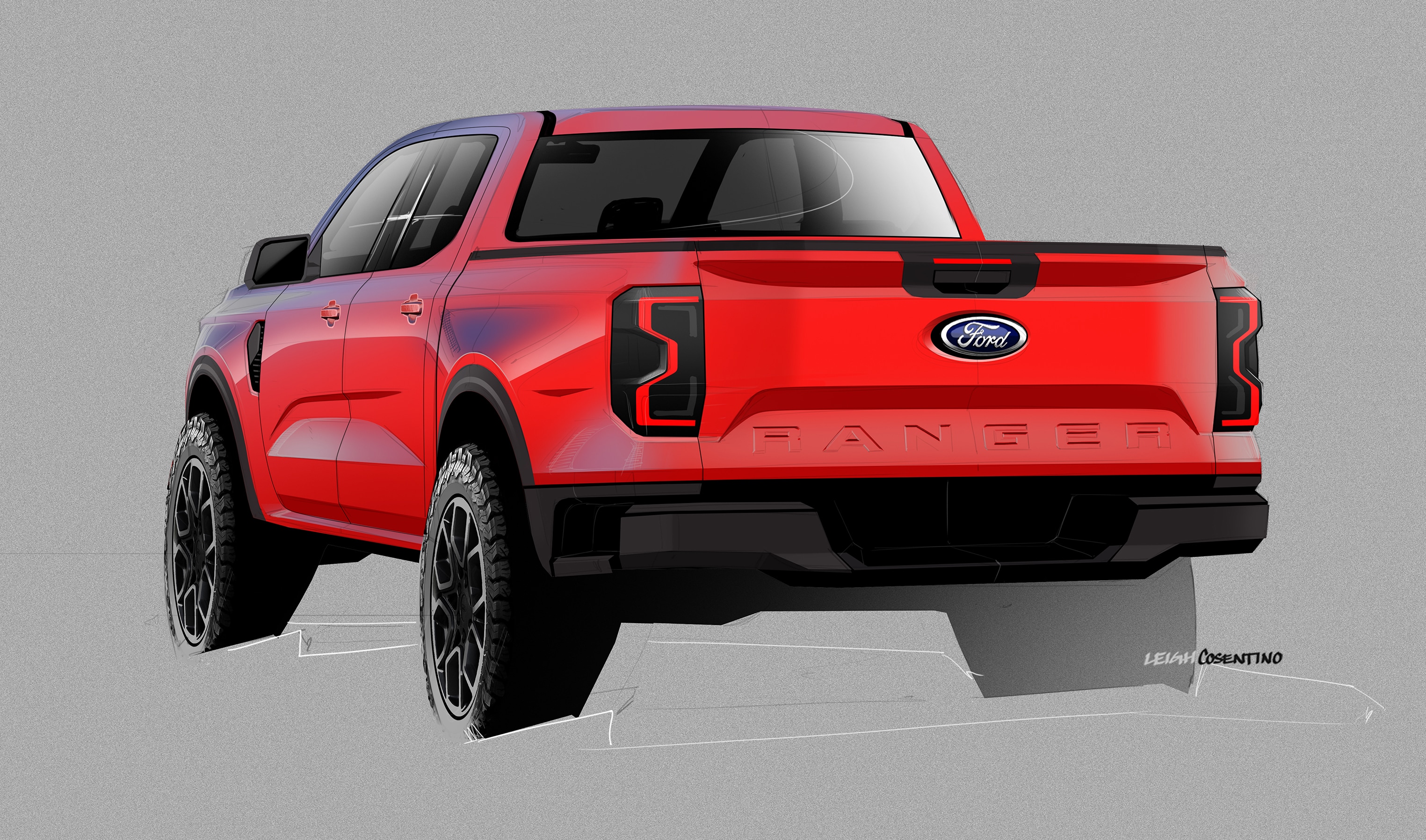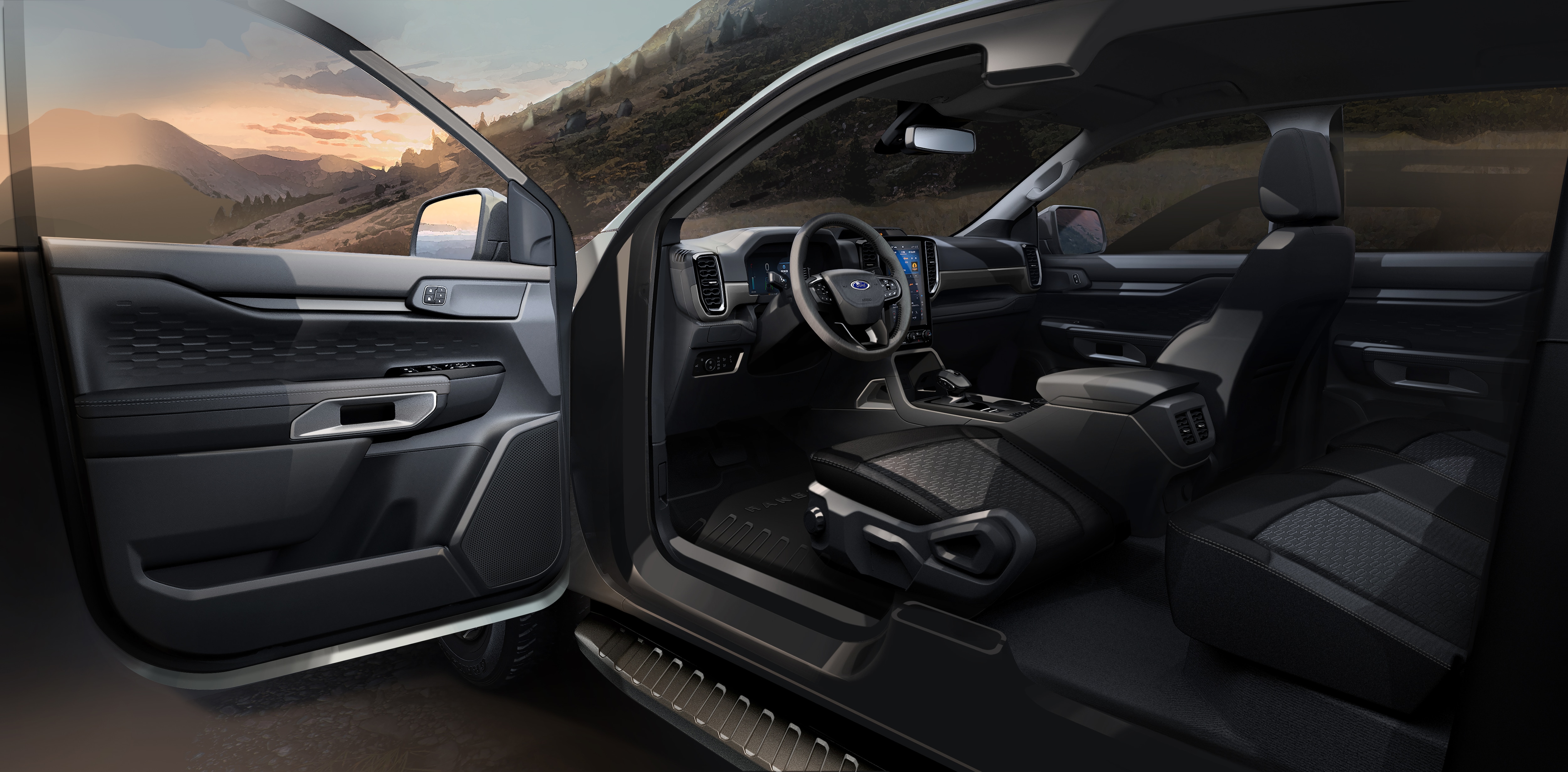Images, video and audio from this Web site are provided without login for the purpose of editorial use only.
You must contact media@ford.com to obtain approval for advertising, marketing or other commercial users.
Ford Media Center
MELBOURNE, Australia, Nov 24, 2021 – With an athletic exterior and premium interior, the next-generation Ford Ranger is the result of deep customer insight, developed through extensive customer research into what makes a great pickup.
Designers took these insights, plus Ranger’s award-winning pickup formula, to create the next-generation Ranger – the one iconic, versatile and trusted pickup customers trust to tackle almost anything.
“In a very real sense, our customers have been with us all along the vehicle development journey,” said Max Tran, chief designer for Ranger. “We reimagined the Ranger from understanding and interpreting how our customers used their truck and what they expected from a pickup.
“This journey started even before we put pen to paper with our first sketches,” Tran said. “We were not just trying to create a good truck. We wanted to create an exceptional one that inspired owners every time they saw their Ranger in their driveway.”
Tran’s team spent hundreds of hours with customers around the world to see how they use their pickups on a daily basis. Ford conducted more than 5,000 interviews and made more than 1,800 pages of field notes for reference, which helped development and guide both engineers and designers to build a pickup with the features and capability customers wanted.
“Seeing owners use their trucks, whether for work, family or play, inspired some fantastic ideas that drove our design and development decisions,” said Tran. “One great example of that is the integrated box side-step. During our clinic sessions, we noticed that many customers had trouble reaching over the side of the truck into the bed; others were standing on the rear tire or the bumper to gain access.
“So, we came up with the idea of a box step, behind the rear wheel,” he said. “We mocked one up, tested it with owners and the response was overwhelming. People told us that step would be reason enough to buy the Ford Ranger.”
Despite a broad customer base with different requirements and backgrounds, Tran’s team discovered that Ranger owners globally shared a lot of similar personality traits.
“We found that no matter what the market, our customers are doers. They like solving their own problems, and they like to feel confident in their truck, not just in the way the vehicle functions, but also in the way they feel when they’re driving it.
Exterior Design
The exterior design of the next-generation Ranger followed two important guiding principles: to bring it into the future and to make it Built Ford Tough.
“Customers had clear ideas on what they liked and how they used their Rangers in their day-to-day lives,” Tran said. “We also needed to incorporate features customers wanted and valued to ensure it was welcoming and contemporary and as versatile as it was capable. The new box step in the rear bumper, for example, was a direct result of customer feedback on having better accessibility to the cargo area and they also wanted a wider cargo area that could accommodate a full-width pallet in the tray.”
Armed with extensive customer research and their guiding principles, Tran’s team set about translating everything into a set of visuals to reference for inspiration. Only then did they reach for their sketch books and high-tech design tablets to start the initial designs.

“Some of us looked to nature, some to architecture and some others to art for inspiration. We didn’t hold back. We let our designers loose to really go for it,” Tran said. “We really looked at Ranger as the F-150’s brother. Ranger has developed a strong following over the past 10 years, and we really leaned into the iconic design features that have made it such a beloved truck across the world but also push the design envelope.”
The pickup’s athleticism is intentional, with surface treatments executed to be strong and muscular. From the bold new grille with its C-clamp headlights, daytime running lights and strong horizontal upper grille bar, to the pronounced wheel arches, strong shoulder line and large sculpted Ranger logo on the tailgate, the next-generation Ranger conveys confidence and capability. At the rear, the taillamps were designed in harmony with the graphics of the C-clamp headlight treatment. A 50mm increase in track and 50mm longer wheelbase than the prior Ranger allowed designers to push the front wheels out to the corners, enhancing its on-road stance.

“We’ve taken everything we loved about the Ranger and really brought that into the future,” Tran said. “We’ve managed to create a bold new look while preserving the ruggedness and capability that people love about their current truck – and we’re excited to finally be able to show it to the world.”
Up to eight different exciting exterior colors have been introduced into the lineup, evolving the Ranger’s exterior color palette with innovative and on-trend offerings to suit customer lifestyles.
New wheel sizes range from new 17-inch alloys up to 20-inch machine-face multi-spoke alloys – a first for Ranger.
Interior design
Inside, the next-gen Ranger features a stylish new cockpit, user-friendly technology and a premium, versatile and spacious cabin. Designers focused on establishing a strong visual harmony inside to complement the durable and robust exterior.
Soft-touch materials and appliques elevate the interior ambience while the new instrument panel adopts a coast-to-coast design that creates a more spacious feel. Several design cues also are carried over from the exterior: the air vent vanes feature a similar design to those in the front grille, and several exterior surface treatments have been adapted for interior use.

The dash is dominated by a 10.1-inch or 12-inch high-resolution touchscreen solidly mounted into the center stack, complementing the digital instrument cluster. Customers preferred the screen’s portrait orientation because it created enough space for navigation screens while also leaving room in the lower portion of the screen for other menus, like those for the climate and entertainment controls.
Another key area of customer input was the available e-shifter for its automatic transmission. Ford initially created a rotary dial gear selector, but customers preferred the short-throw e-shifter because it boosted the truck’s high-tech appeal.
Designers also reimagined key aspects of the cabin; for example, how the door release handles could be better integrated into the ‘coast-to-coast’ dashboard design, making them easier to use. Again, customer feedback led to the door release handles being mounted lower – looking more linear to provide easier reach to window switches and the armrests. The interior also features more soft-touch materials around the cabin for a premium feel.
The seats also have been redesigned, with new bolsters and foam inserts that are more inviting, stylish and comfortable. Versatility is key with the second-row seats now folding flat and boasting out-of-sight and secure under-seat storage. Rear occupants also have heating and cooling outlets at the rear of the center console. There is also an added storage area in the door pockets with space both in the front and back.

“The next-gen Ranger really redefines the role of the pickup as a trusted partner for work, family and play,” said Gary Boes, Enterprise Product Line Management director, Global Trucks. “With the help of all the rich insights from customers, we’ve created a Ranger we believe will inspire owners to do more of what they love to do, with features that encourage them to explore new horizons.”
The next-gen Ranger will be built at Ford’s plants in Thailand and South Africa beginning in 2022. Specific market launch details will be announced at a later date.
Ford Motor Company (NYSE: F) is a global company based in Dearborn, Michigan, that is committed to helping build a better world, where every person is free to move and pursue their dreams. The company’s Ford+ plan for growth and value creation combines existing strengths, new capabilities and always-on relationships with customers to enrich experiences for and deepen the loyalty of those customers. Ford designs, manufactures, markets and services a full line of connected, increasingly electrified passenger and commercial vehicles: Ford trucks, utility vehicles, vans and cars, and Lincoln luxury vehicles. The company is pursuing leadership positions in electrification, connected vehicle services and mobility solutions, including self-driving technology, and provides financial services through Ford Motor Credit Company. Ford employs about 184,000 people worldwide. More information about the company, its products and Ford Motor Credit Company is available at corporate.ford.com.